A UNESCO World Heritage Site and a wonder of the world, Angkor Wat seems to appear on several peoples bucket lists and after visiting, I can see why! The temples of Angkor are a site to be reckoned with, and one that is a must-see if you find yourself in Southeast Asia.
Located in the Siem Reap province of Cambodia, about 5.5km from Siem Reap, Angkor Wat is a temple complex that holds the honour of being the largest religious monument in the world. Built in the 12th century, the name “Angkor Wat” means “Temple City” or “City of Temples” in Khmer, and is seen to be a powerful symbol of Cambodia.
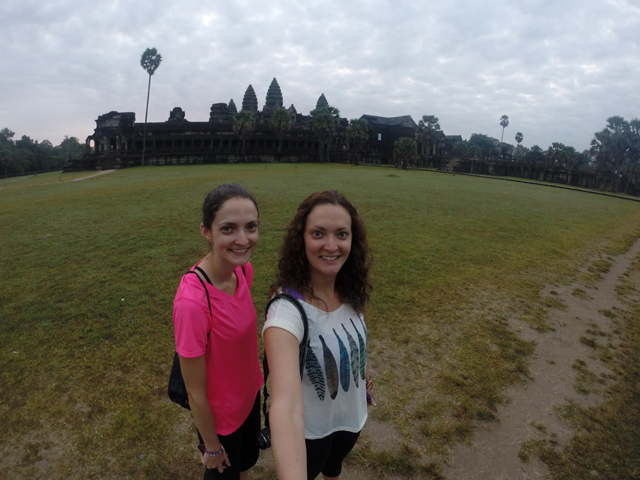
When I was in Siem Reap in December 2014, one of our main reasons for visiting was to see the temples, and while talking to many people at our hostel, that seemed to be what brought everyone there. Some people visit for a week to explore all the temples and ruins of Angkor, while others (like us) allocated one day to visit.
The amount of time you visit is entirely dependent on your interest in these religious buildings. For us, one day seemed to be more than enough time, but for others, the looked at my sister and I like we were crazy when we told them we were only spending a day there. Traveling with limited amount of time, we were happy to only spend one day here, and felt privileged to even have that time.

We arranged a tuk tuk driver through our hostel that picked us up at 5:00am to bring us to catch sunrise at Angkor Wat. Our tuk tuk driver stayed with us the whole day and drove us between each temple. People seem to either flock to the temples for sunrise or sunset—we picked sunrise. As we drove towards the temple grounds, you almost felt like you were a part of a secret club or cult as you watched all the sleepy tourists pass you in cars and tuk tuks heading to the temples to catch sunrise too.
When we arrived at the gates, we had to get our photos taken for our day pass. A one-day pass cost $20 USD, three days is $40 USD, and seven days is $60 USD. The price seems a bit steep in comparison to everything else in Asia, especially since I just read this article that Angkor Wat made $45 million USD off ticket sales in 9 months, but the cost is worth it.

We visited three main temples on our day in Angkor, than stopped along the way at some smaller, less notable ones.
Angkor Wat
The first stop of the day was Angkor Wat for sunrise. As you get out of your tuk tuk, you feel like everyone is sleepwalking to what seems like a black hole. You can’t see anything, including the temple, but you follow the hoards of people that all seem to be heading in the same direction.

Everyone waiting to get the perfect photo during sunrise.
We thought maybe the sunrise would be less busy because who wants to get up that early? We were wrong. The area that everyone stood in front of the temple to catch the best photo of the sunrise was filled with hundreds of people, and to be honest, you really don’t get much of a view standing there. Instead, we headed off to the side of the little pond where not very many people seemed to go for some reason. This gave us a bit better of a view.
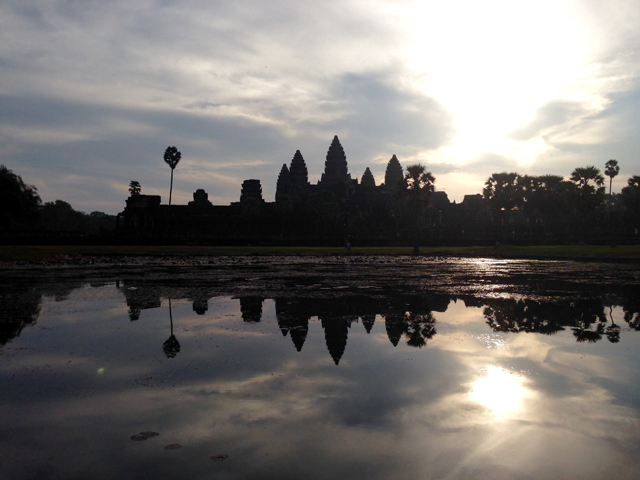
As soon as the sun came up, instead of staying behind with the hundreds of tourists and trying to snap photos until you finally got one without a million people in it, we headed straight into the temple. This was advice we received the day before from another tourist, because when we got inside we were probably the only ones who thought to do this. We had quite a bit of time exploring in peace until the hoards of tourists switched gears and headed inside.
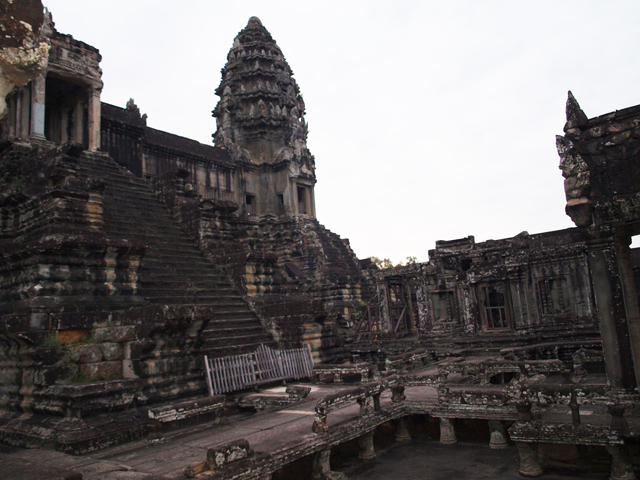
Our best photos we took were actually taken after the sun was up, as our sunrise was a bit cloudy and disappointing, but even though this is a touristy spot, it’s totally worth visiting. It’s hard to get over how beautiful this temple is, and you can seriously wander and get lost in the maze of rock and ruins and enjoy the view of the temple from so many different angles. It was one of those places that gave you a real surreal feeling.
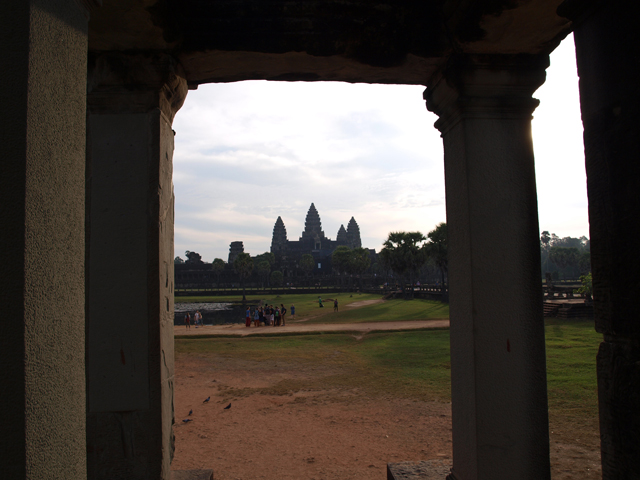
Bayon
You may find it hard for any temple to come close to comparing once you’ve seen Angkor Wat, but Bayon is pretty impressive too. This temple is known mainly for its 216 faces that are carved into it.

This temple is particularly cool because aside from the faces, it also houses several detailed, carved historical timelines in the walls. As you walk along the temple you’ll see images that depict historical events and every day life (outer gallery) and then depictions of mythological events on the inner gallery.

Ta Prohm
This temple was definitely significantly different from Angkor Wat and Bayon, as it was more naturally beautiful. This temple is most famously known as the one that has been taken over by nature, and you’ll notice why as you see the trees that have grown over top of part of the temple. Although some of the other temples have had some significant restoration work done, Ta Prohm has been left largely the way it was found.

Ta Prohm is also famously known for being a star in the movies Tomb Raider and Indiana Jones, and with its eerie, secret garden feel to it, you’ll realize why it was such a famous site for filming.
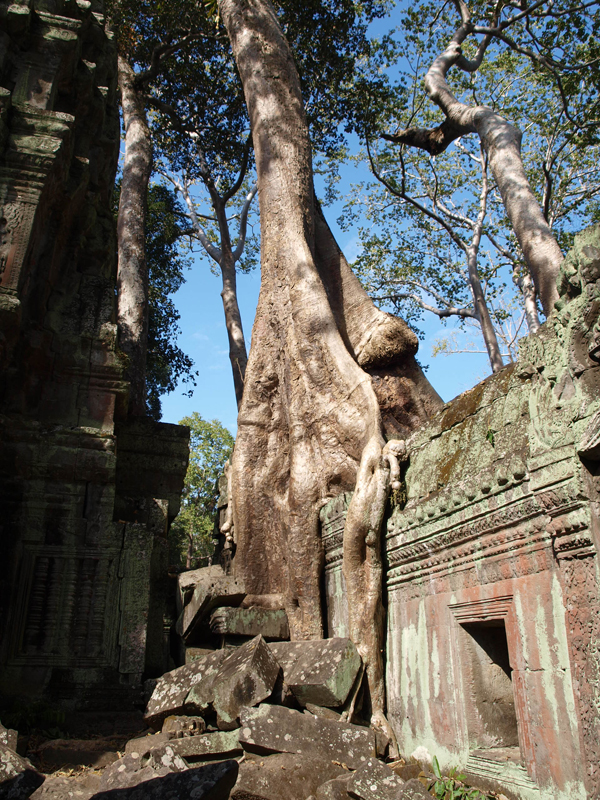
Overall our one-day exploring the Angkor temples was well worth it. These temples really leave you in awe, and although I’m not a history buff, walking around and wandering on your own in silence is honestly breathtaking and surreal. So if you find yourself near or in Cambodia, make sure to pay a visit and check this place off your bucket list—it’ll be worth it, I promise!


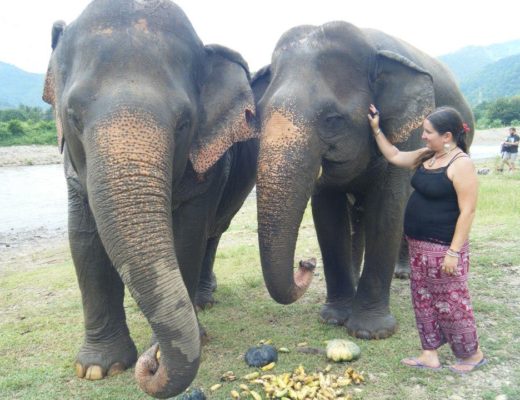


2 Comments
Larry Adams
October 29, 2015 at 3:00 amHi,
Have you also travelled to other places in Cambodia and its neighboring areas, your inputs would be helpful as I’m looking forward to a trip in Southeast Asia.
Lauren
October 29, 2015 at 11:40 amHi Larry,
Unfortunately when I was in Cambodia I was very short on time, so I only got to Siem Reap. I would LOVE to return to see more of this country though!! Have a great trip 🙂